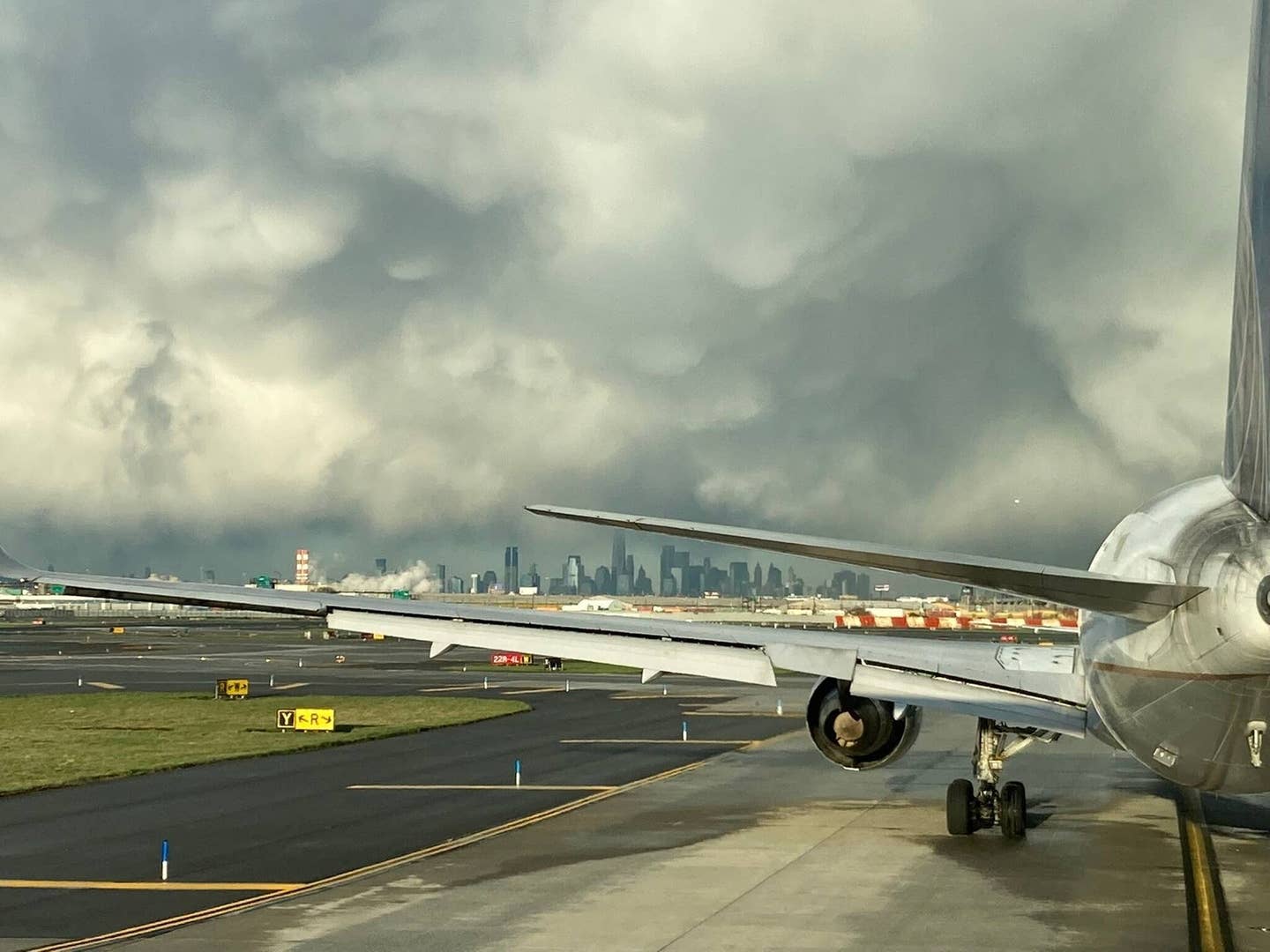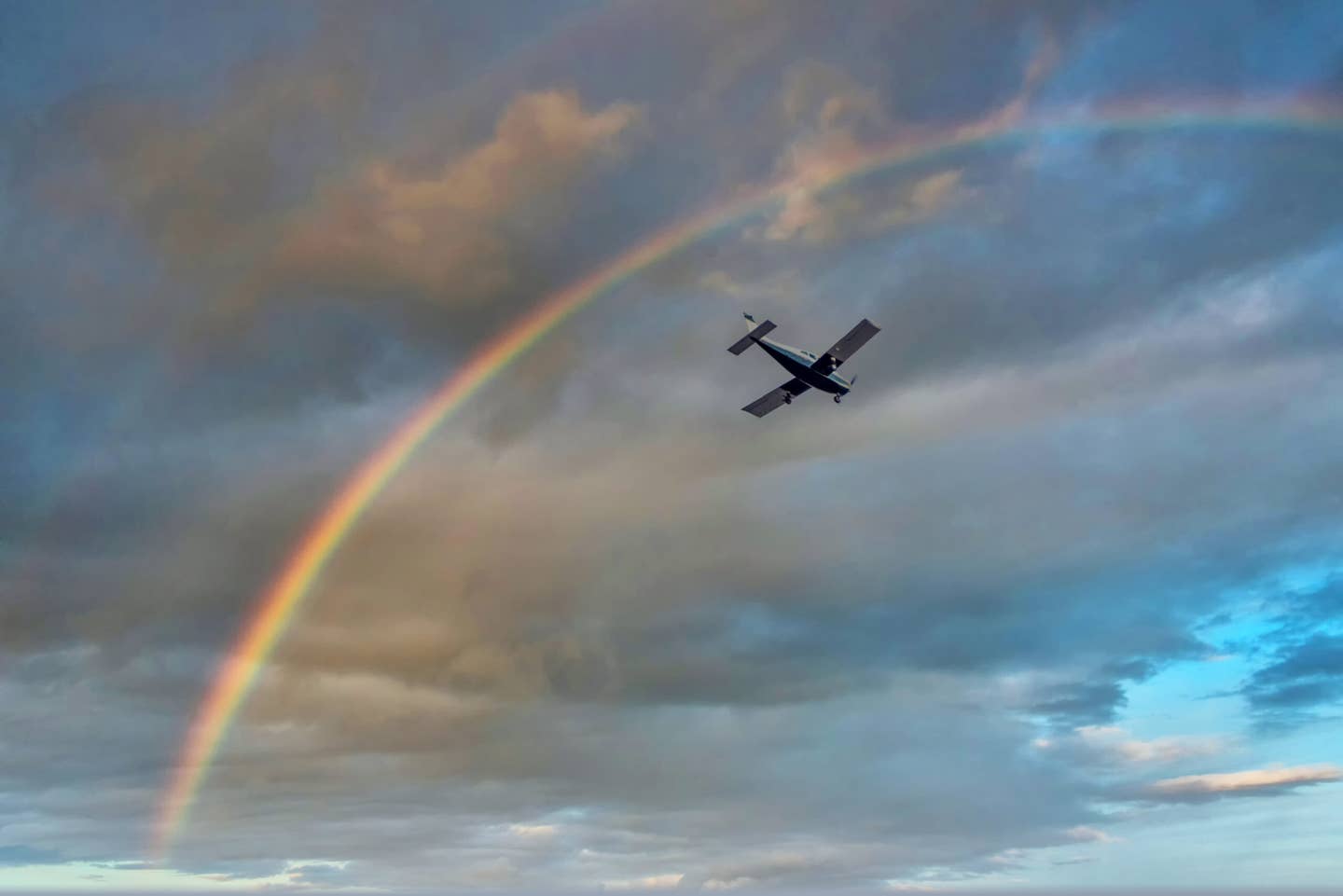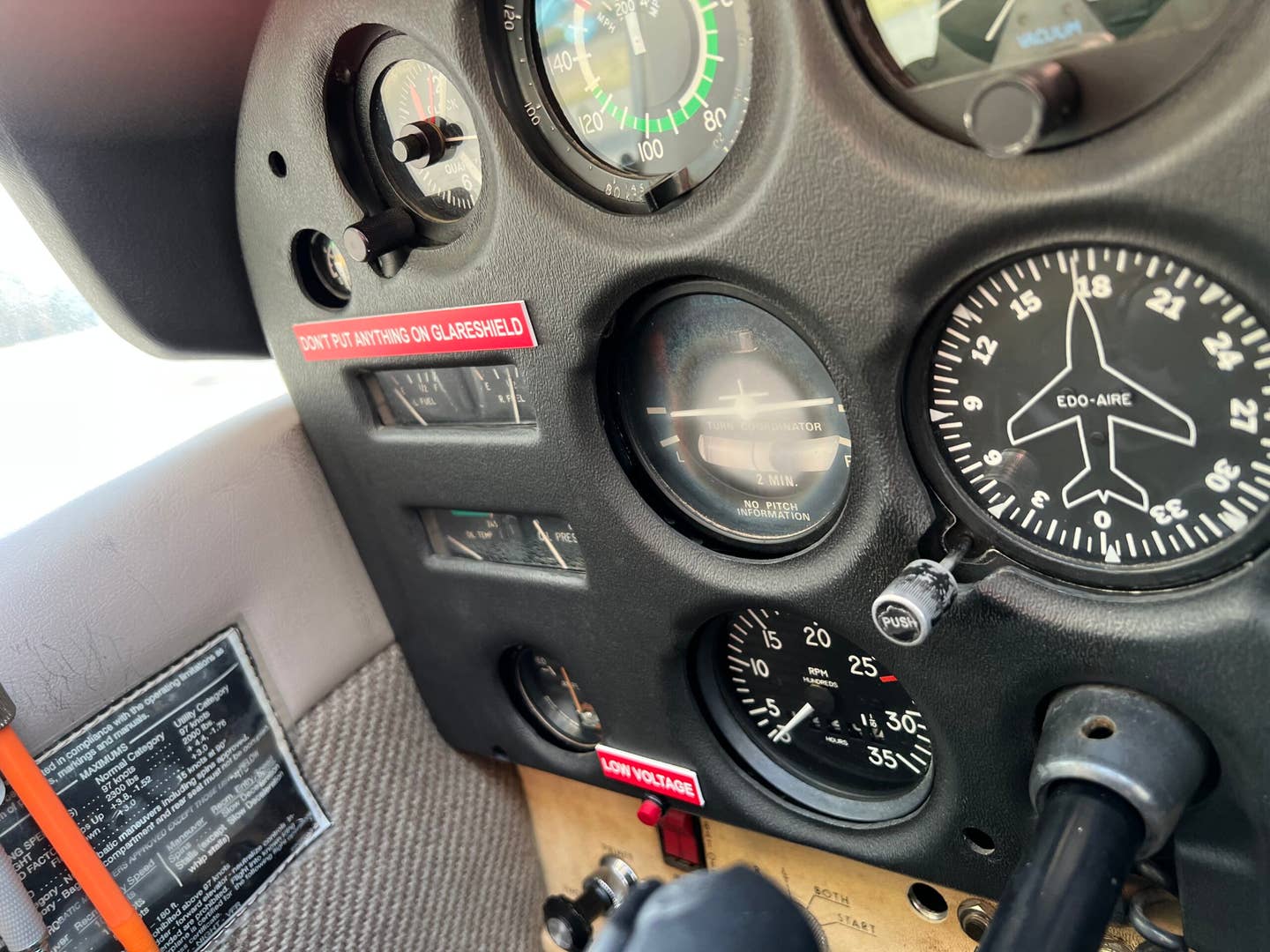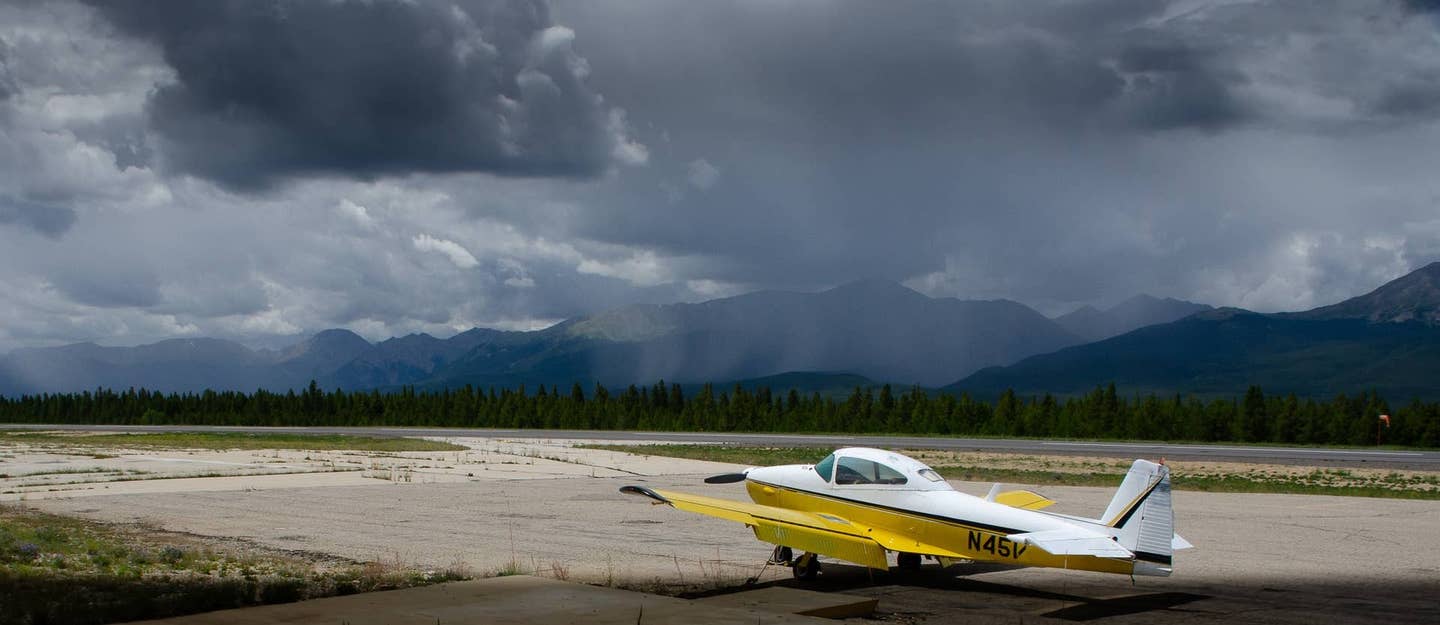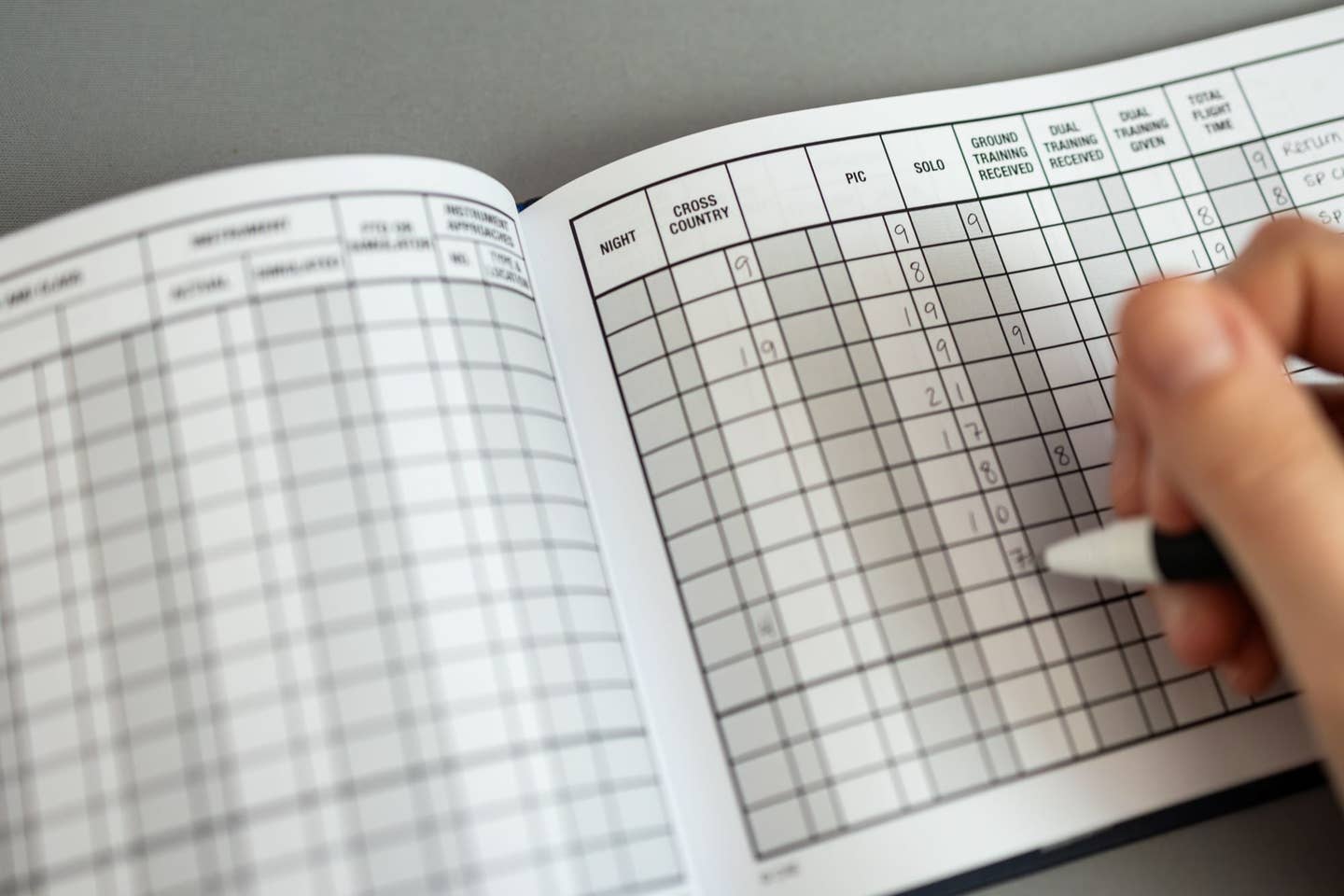
There is little excuse for any pilot flying in the United States not to have seen a recent weather radar picture when thunderstorms are possible along the route. Any computer can link you to Nexrad radar sites before takeoff, and satellite downlink of more current weather radar is available at a price that makes sense to any pilot who travels in an airplane.
But the radar image is only one ingredient necessary to formulate a severe weather avoidance plan. Radar is the single most important tool, but it needs to be combined with other information to get a true picture of the weather.
Radar, as you almost certainly know, functions by transmitting a short, powerful burst of radio energy. The energy is focused tightly into a beam and aimed by a moving antenna. When the radio energy strikes an object a small amount of the energy is reflected back to the radar antenna. By timing the round trip of the radar pulse to the target and back, the range to the target can be calculated with precision. The angle of the antenna when the pulse is transmitted and echo then received provides bearing to the target.
The first use of radar was to detect enemy aircraft and ships at ranges earlier technology could not accomplish. Radar pioneers quickly discovered that the radio energy transmitted by the radar would reflect back from precipitation as well as aircraft. This was a huge obstacle to the mission of target acquisition, and massive efforts were made to find radio frequencies and pulse lengths that could penetrate any precipitation and find the threat.
But the serendipity of radar detecting precipitation as well as ships and airplanes was soon realized and new types of radars were developed that were optimized to locate, measure and track precipitation. For the first time weather forecasters could locate precipitation at great distances, and measure its intensity and movement.
Another fortunate coincidence is that larger raindrops, and heavier concentration of those drops, are the best radar reflectors and thus show up as the strongest echoes on the radar. And, big drops and heavy rain are also a signature of thunderstorms. The powerful vertical currents that are required to create a thunderstorm are also part of the mechanism that creates large drop size. So, when a weather radar shows a strong echo we can conclude that there are large drops, heavy rain, and there could be a thunderstorm.
Modern digital radars like the Nexrad images that we see from the satellite in the cockpit, or on our computer, or on the TV weather report, rank the strength of a returned echo and code it by color. Nexrad has more than a dozen different levels of echo strength with slight color change to show the intensity of each target area. Light greens are weak echo strengths moving to intense reds, and then magenta and a sort of purple for the strongest.
So, what could be easier than to avoid severe weather with a color radar map of the precipitation. Just dodge the areas that are anything but green and you will miss all thunderstorms, right? There is a little truth in that. But you will not necessarily miss turbulence, and you may find yourself flying around radar targets that are nothing more than rain in smooth air.
So you need more than weather radar to do a good, safe, efficient and comfortable job of staying out of the nasty stuff. To help complete the picture you need to understand the general weather system you are considering, and you want to have information on lightning.
An essential characteristic of a thunderstorm is, well, thunder. In the old days when humans made weather observations and reports, if the observer heard thunder there was a thunderstorm nearby and that's what he reported. He didn't need to see visible lightning, just hear the thunder to make the report. And there was no need for rain. That, you may remember, is reported as TSRA, or thunderstorm with rain.
| ** Avidyne has introduced a new lightning detector, the TWX670, that is able to map lightning activity and present the data in a way that looks much like a weather radar display. Like the radar image, the colors show higher levels of activity with red being the area of most lightning strokes.** |
Thunder is created by lightning that rapidly heats and expands the air it travels through, and it is that expansion that we hear as thunder. So thunder is really the audible evidence of the presence of lightning, so it is actually lightning that makes a thunderstorm. Or the other way around, actually. It is the friction of the rapidly moving air currents in the forming storm that create the lightning that makes the thunder.
As pilots we want to do our best to avoid lightning strikes, even though airplanes are designed to withstand them. Lightning can do physical damage to the airframe, particularly to a trailing edge where it exits and can blow part of the structure away. Lightning can also knock out electrical and avionics systems. Airplanes do get hit with surprising frequency, and damage is not always caused by the strike, but it can and does happen.
Though lightning is a real threat, it is actually the powerful air currents in the most intense thunderstorms that cause the lightning that can tear an airplane apart. So, just as we use the radar picture of precipitation to try to identify a thunderstorm, we do the same with lightning. Avoiding very heavy rain and lightning is a good idea, but the real enemy is turbulence, and perhaps hail that is found in many severe storms.
The weather providers that send information to the cockpit or computer offer lightning strike information collected by national networks. This data is very useful because if there is lightning, there is a thunderstorm. And the accuracy of the displayed lightning location from the networks is good.
If you were flying in the vicinity of this long cold front and saw moderate to heavy precipitation on the radar display, you should expect significant turbulence. The forecast shows thunderstorms along the Gulf Coast, rain farther north, and snow showers over the Great Lakes.
But there are at least two significant concerns with relying on lightning data from the national networks. First, the networks detect primarily cloud to ground strikes, which are a signature of a mature thunderstorm. However, during early development of the storm, lightning is confined within the cloud or it bolts between clouds. As much as 90 percent of all lightning can be this intracloud, or intercloud, lightning that may not be detected by the ground-based networks. A storm can grow to very serious levels of turbulence before lightning starts to jump from cloud to ground.
The other issue with the lightning networks is latency. The strike data is collected, and then transmitted in batches so it is a number of minutes old by the time you first see it. Typically new data is transmitted on a predetermined cycle of minutes so there is a little delay as the data is collected on the ground, and then another delay before you receive the lighting display in the cockpit, or even on the computer. Thunderstorms can build and intensify so quickly that any delay in radar or lightning information can give you an incomplete picture of the weather situation.
A solution for lightning detection is to buy a Stormscope from L-3 Avionics, or a TWX670 tactical weather detection system from Avidyne. These airborne lightning detectors find all forms of lightning and can alert you to storm formation by showing intracloud and intercloud lightning immediately as the storm begins to build. Also, the systems function in real time so there is no reporting delay between detection of the lightning stroke and its display.
| ** The Stormscope can show both individual lightning activity in the "strike" mode selected here, or you can ask to see groups of lightning strikes by selecting the "cell" mode. Strike mode gives the earliest warning of thunderstorm formation.** |
The absolute position fixing accuracy of the lightning detected by the Stormscope or the TWX670 is not as good as for the ground-based networks, but the advantages of seeing all types of lightning, and having no reporting delay, overwhelm any lack of range and bearing accuracy. And the airborne systems provide independence from the satellite networks when you fly beyond the U.S. borders.
Finally, to assess what you see on the Nexrad picture even if there is no lighting present, you need to understand the overall weather situation. If the air is stable, no significant fronts or low-pressure systems are nearby, and winds aloft are not unusually strong, the precipitation you see on the Nexrad return is probably not caused by a thunderstorm, or severely turbulent cloud. But if the air is unstable -- meaning the air is cooling steadily as you climb -- or there is a front nearby, or low-pressure system, beware of even light radar returns. The conditions may not meet the requirements to be called a thunderstorm, and storms may not develop, but the conditions I mention are ripe for creating very turbulent air that can make it tough for any airplane or pilot.
You must also consider latitude and season of the year when assessing a radar return. Very heavy rain often forms in the tropics, or even middle latitudes in the summer, that is not the result of strong convection and turbulence. For example, a radar display of very heavy rain while flying in south Florida in the summer would be far different than a similar looking radar picture over Oklahoma in the spring or early summer. The elements to create a heavy rain are often available in Florida, for example, without the powerful winds and shears needed to make a thunderstorm. However, in the higher latitudes and away from warm bodies of water you can be pretty sure that very strong forces are present to create a radar picture that shows heavy precipitation.
Collins is taking advantage of this seasonal and location information with its new smart airborne weather radar. The radar knows its lat-long based on information from the navigation system; it also knows the date and time of day. With a database of historical meteorological information the smart radar can present precipitation targets differently based on the likely threat. It also can use Doppler techniques to actually measure turbulence in a return, but that feature is available only at closer ranges. The smart radar is showing pilots information that it took the old graybeards flying thousands of hours along the same routes to learn.
Another consideration when studying a Nexrad radar image is to look at the gradient of the echoes. Gradient is the distance between each increasingly stronger echo on the display. If the radar returns go from green, to yellow, to red over a very short distance, that is said to be a steep gradient. If there are many miles between the changes in echo intensity, that is a shallow gradient. A steep gradient is a radar signature of a thunderstorm and significant turbulence. Even if you can't find lightning in the area a steep gradient on the radar display will almost certainly indicate turbulence and a very uncomfortable ride, or worse. Avoid steep radar gradients by several miles.
Steep gradients on the radar image can lead you to believe that there are "gaps" between storms, but those gaps often are not there. For example, there may be no radar return, not even light echoes, between two targets with steep gradients. However, if those radar targets are closer together than about 10 nm, there is most likely interaction between the two cells. If you fly between two targets with steep gradients you are probably avoiding the worst turbulence of the cells shown by radar, but the air in the gap in between can be very turbulent. At the lower levels there will typically be clouds between the two echoes, even though there is not enough precip to show on radar. And at all levels, even if the air is clear of clouds, the gap between two significant cells shown by radar can be dangerously rough.
You should also be aware of the direction of movement of the radar targets you see. The most turbulent air is usually on the leading edge of the weather and you should give that side a wider berth. If you haven't seen enough radar images to see the direction the echoes are moving, look at the gradient of the returns because they are usually steepest on the leading edge.
Finally, use your eyes to assess the clouds. No matter what the Nexrad shows, or the absence of lightning, or even no thunderstorms in the forecast, clouds give their own visible warning. If the cloud ahead is puffy looking, and you can see several shades of white and gray color around the edges, and from top to bottom, beware. In almost 40 years of flying it's hard to remember a cloud that looked bumpy but really wasn't. If clouds look mean, they almost always are. It doesn't work as well the other way around, where a benign-looking layer can sometimes contain more turbulence than you care to encounter, but their bad-looking cousins seldom disappoint no matter what the radar or lightning detector says.

Sign-up for newsletters & special offers!
Get the latest FLYING stories & special offers delivered directly to your inbox


